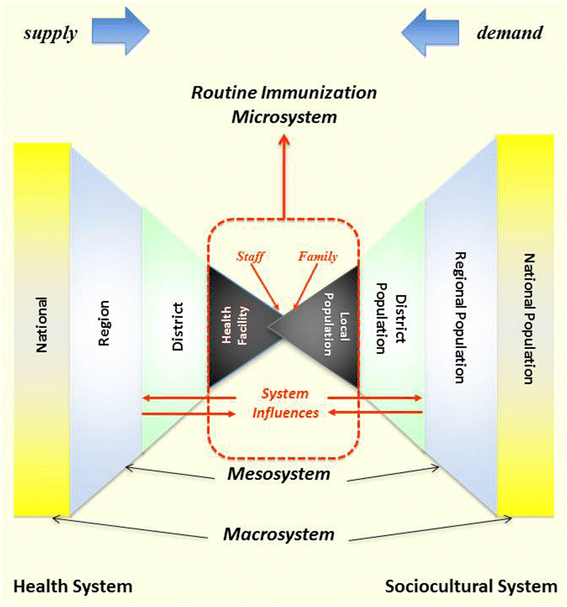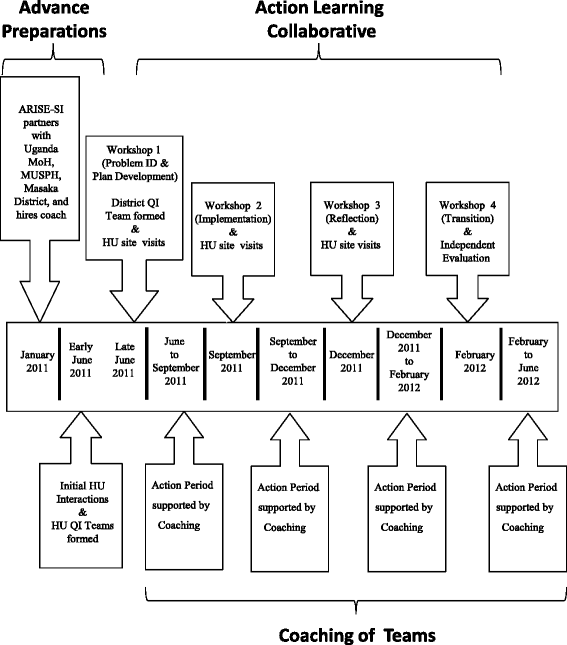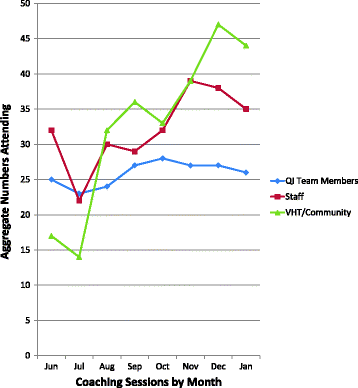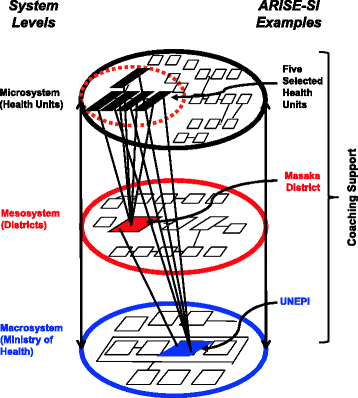The gas cylinder, the motorcycle and the village health team member: a proof-of-concept study for the use of the Microsystems Quality Improvement Approach to strengthen the routine immunization system in Uganda
- PMID: 25889485
- PMCID: PMC4377204
- DOI: 10.1186/s13012-015-0215-3
The gas cylinder, the motorcycle and the village health team member: a proof-of-concept study for the use of the Microsystems Quality Improvement Approach to strengthen the routine immunization system in Uganda
Abstract
Background: Although global efforts to support routine immunization (RI) system strengthening have resulted in higher immunization rates, the World Health Organization (WHO) estimates that the proportion of children receiving recommended DPT3 vaccines has stagnated at 80% for the past 3 years (WHO Fact sheet-Immunization coverage 2014, WHO, 2014). Meeting the WHO goal of 90% national DPT3 coverage may require locally based strategies to support conventional approaches. The Africa Routine Immunization Systems Essentials-System Innovation (ARISE-SI) initiative is a proof-of-concept study to assess the application of the Microsystems Quality Improvement Approach for generating local solutions to strengthen RI systems and reach those unreached by current efforts in Masaka District, Uganda.
Methods: The ARISE-SI intervention had three components: health unit (HU) advance preparations, an action learning collaborative, and coaching of improvement teams. The intervention was informed and assessed using qualitative and quantitative methods. Data collection focused on changes and outcomes of improvement efforts among five HUs and one district-level team during the intervention (June 2011-February 2012) and five follow-up months.
Results: Workshops and team meetings had a 95% attendance rate. All teams gained RI system knowledge and implemented changes to address locally identified problems. Specific changes included: RI register implementation and expanded use, Child Health Card provision and monitoring, staff cross-training, staffing pattern changes, predictable outreach schedules, and health system leader--community leader meetings. Several RI system barriers prevalent across Masaka District (e.g., lack of backup HU gas cylinders, inadequate outreach transportation, and village health team underutilization) were successfully addressed. Three of five HUs significantly increased the vaccines administered. All improvements were sustained 5 months post-intervention. External evaluation validated the findings of high levels of participant engagement, empowerment to make change, and willingness to sustain improvements.
Conclusions: The Microsystems Quality Improvement Approach is a comprehensive approach, grounded in systems thinking, and coupled with intensive coaching. It provides a robust framework for engaging teams in the development of unique local solutions that strengthen RI systems in resource poor settings. The sustained improvements in local RI systems from this study provide evidence that this approach may be an effective framework for enhancing the WHO's Reaching Every District (RED) immunization strategy.
Figures




References
-
- WHO. WHO Fact sheet—Immunization coverage 2014. WHO. 2014. http://www.who.int/mediacentre/factsheets/fs378/en/. Accessed May 14 2014.
-
- GAVI Alliance. GAVI facts and figures. http://www.gavialliance.org/advocacy-statistics/. Accessed May 14 2014.
-
- WHO, UNICEF. Global immunization data. 2014. http://www.who.int/immunization/monitoring_surveillance/Global_Immunizat.... Accessed May 14 2014.
-
- Government of Uganda. Immunisation practice in Uganda: a manual for operational level health workers. Kampala, Uganda: Ministry of Health, Uganda National Expanded Programme on Immunisation (UNEPI). 2007.
-
- WHO. AFRO-RED Guide—implementing the Reaching Every District approach: a guide for District Health Management Teams. Geneva, Switzerland: WHO Africa Regional Office in collaboration with UNICEF and USAID’s IMMUNIZATIONbasics Project. 2008.
Publication types
MeSH terms
Substances
LinkOut - more resources
Full Text Sources
Other Literature Sources
Miscellaneous

